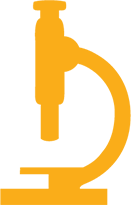20 Minute Labs: Square Bubble

TURN ROUND BUBBLES INTO SQUARES!
 You're probably used to seeing bubbles that are round, or, to use a more scientific term, spherical.
You're probably used to seeing bubbles that are round, or, to use a more scientific term, spherical.In this month's 20 Minute Lab, you'll create a device from straws and pipe cleaners that will let you make a square bubble! And, along the way you'll learn a bit about the concept of surface tension. This experiment can get a bit messy, so it's a good one to do on a table outside! A perfect summertime experiment.
WHAT YOU'LL NEED
-
6 pipe cleaners

- 6 plastic straws
- scissors
- dish soap
- 1/4 cup measure
- small cooler or large bowl that can hold about 2 gallons of liquid
- water
- bubble wand or plastic pipette dropper
- NOTE: if you use a plastic pipette, you'll need to snip the end off bulb (see photo or video for visual).
- towel for clean up!
LET'S GET STARTED!
-
First, cut each pipe cleaner and straw in half so you have 12 pieces of each.

- Next, twist two pipe cleaners together at the ends, then tie a third to the same end, like you're making a three-legged animal.
- Repeat Step 2 so you have four sets of tied pipe cleaners.

-
Now, slide a straw onto each pipe cleaner end.

- Finally, connect all four sets of pipe cleaners together into the shape of a cube, by twisting the ends together.

- Test whether your cooler or bowl is large enough by placing the cube into inside. The cube should fit comfortably and there should be enough room so that the bubble mixture can cover it completely. Set the cube aside.
- To make bubble mixture, pour 1/4 cup of dish soap into your container.
- Gently fill the container with water to a depth that will cover the cube (for us it was about 2 gallons of water). Try to avoid making too many bubbles.
- Use your hand to scoop away the excess bubbles from the surface.
-
Now dip your cube into the bubble mixture, then slowly remove it by holding onto one of the corners. (Allow the excess liquid to drip back into the container.)

- Gently place the cube onto a clean, flat surface that won't mind a bit of soapy water.
- Now you want to create a small round bubble. To do this, either dip your bubble wand or dropper into the liquid, then blow a small bubble.
- Now for the fun part! Gently drop the bubble from the wand or dropper into the center of the pipe cleaner cube with a gentle shake. Watch what happens!
Check out the video to see how it worked for us!
WHAT'S GOING ON?

Have you ever added water drops to a coin and watched the water bulge over the edge but not collapse? (Check out this experiment from Camp Yellow Scope to try it!)
The water stays on the coin because of surface tension. Surface tension is the tendency for water molecules to stick together because they are attracted to each other.
Soap molecules lower surface tension (which makes the drops on the coin collapse), but they also make water more 'stretchy'. This is why a soap bubble doesn't pop as fast as a regular water bubble will. Soap molecules can wiggle in between the water molecules, creating more flexibility. Adding soap to water also makes the water evaporate more slowly.
Bubbles are usually round (spherical) because that shape has the lowest surface area possible to trap the air inside. So how did we make our bubble into a square (cube) shape?

When you dipped your pipe cleaner cube into the soapy water, the solution clung to the sides, an attraction called adhesion. The soapy bubble sides connected together in a square at the center.
To make a 3-D cube, we added a separate, spherical bubble, and it formed a whole new shape to add to your bubble collection!
The soap film is still using the least surface area possible, but instead of a free bubble shape, it's forced to use the pipe cleaner and straw shape you provided. It's a little like a bubble in a cage!
Let us know how your experiments turned out! Share your photos and results with us on Facebook, Twitter, Instagram, or send us an email to info@yellow-scope.com. We love getting your messages!
For more exciting experiments, check out our Yellow Scope science kits on the Shop tab of our website!



Chelsea Schuyler
Author